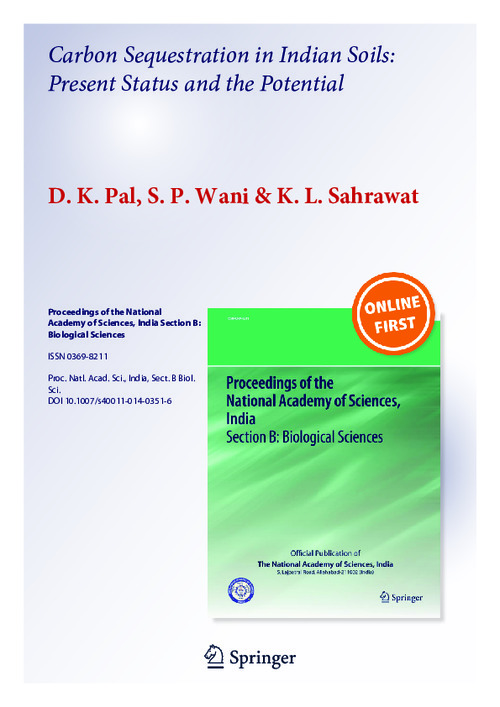Carbon Sequestration in Indian Soils: Present Status and the Potential
Abstract
India’s growing self-sufficiency in food production
and food stocks since independence suggest that
soils have the capacity to produce. Therefore, a review of
Indian soils and their capacity to sequester carbon; and the
factors favouring C sequestration under different land uses
is in order. Several researchers, especially those in The
National Bureau of Soil Survey and Land Use Planning and
the International Crops Research Institute for Semi-Arid
Tropics monitored the changes in soil organic (SOC) and
inorganic (SIC) carbon as influenced by land use in the
Indo-Gangetic Alluvial Plains and black soil regions
between 1980 and 2005. The results showed an increase in
SOC stocks due to turnover of greater plant biomass into
the soil. Results of long-term fertilizer experiments with
rice-based double or triple cropping systems indicate soil’s
capacity to store greater C, and maintain higher C in passive
pools and that active fraction of soil C can be used as
an indicator of soil health. The inclusion of active pool/
labile SOC is expected to improve the performance of
Century eco-system model in predicting SOC changes
under different climatic conditions. Greenhouse gas emissions
from the tropical Indian soils (both zeolitic and nonzeolitic)
do not seem to contribute significantly to the
global warming potential. The application NPK plus FYM
emerged as a cost effective technology for Indian farmers In view of the potential of C sequestration by major zeolitic
and non-zeolitic soils, the present SOC stock of about
30 Pg can be further increased

